Albrecht Mertz von Quirnheim
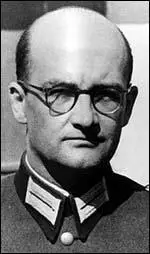
Albrecht Mertz von Quirnheim was born in Munich, Bavaria, the son of Hermann Mertz von Quirnheim, a captain on the Bavarian General Staff, on 25th March, 1905. As a young man he got to know the brothers Werner von Haeften and Hans-Bernd von Haeften, through family connections. (1)
Quirnheim joined the German Army in 1923. He became a member of the Nazi Party and served in the Sturmabteilung (SA), convinced that it was "destined to be a true people's army entrusted with the with the defence of the fatherland". (2)
On the outbreak of the Second World War, Quirnheim was appointed a Staff Officer at the General Staff's organisational division. He gradually became disillusioned with Adolf Hitler. In 1941, for example, he supported the more humane treatment of civilians in Nazi-occupied Eastern Europe. (3)
In January, 1942, a group of men that included Colonel Quirnheim, Field Marshal Erwin von Witzleben, General Friedrich Olbricht, Colonel-General Ludwig Beck, Colonel-General Erich Hoepner, General-Major Henning von Tresckow, General-Major Hans Oster, General-Major Helmuth Stieff, Fabian Schlabrendorff, Wilhelm Leuschner, Ulrich Hassell, Hans Dohnanyi, Carl Goerdeler, Julius Leber, Peter von Wartenburg, Johannes Popitz and Jakob Kaiser, decided to overthrow Adolf Hitler. The conspiracy was called Operation Valkyrie. (1)
Albrecht Mertz von Quirnheim and Claus von Stauffenberg
In October 1943, Lieutenant-Colonel Claus von Stauffenberg, joined the group. While serving in Africa, Stauffenberg was wounded in the face, in both hands, and in the knee by fire from a low-flying Allied plane. According to one source: "He feared that he might lose his eyesight completely, but he kept one eye and lost his right hand, half the left hand, and part of his leg." After he recovered it was decided that it would be impossible to serve on the front line and in October, 1943, he was appointed as Chief of Staff in the General Army Office. (2)
The group was pleased by the arrival of Stauffenberg who brought new dynamism to the attempt to remove Hitler. Stauffenberg volunteered to be the man who would assassinate Hitler: "With the help of men on whom he could rely at the Führer's headquarters, in Berlin and in the German Army in the west, Stauffenberg hoped to push the reluctant Army leaders into action once Hitler had been killed. To make sure that this essential preliminary should not be lacking, Stauffenberg allotted the task of assassination to himself despite the handicap of his injuries. Stauffenberg's energy had put new life into the conspiracy, but the leading role he was playing also roused jealousies." (3)
Axel von dem Bussche
The original plan, devised by General Major Tresckow, believed that only an assassination attempt at the Führer Headquarters could get round the unpredictability of Hitler's schedule and the tight security precautions surrounding him. They therefore needed to find a suicide bomber. The first person approached was Captain Axel von dem Bussche, He was a highly decorated captain and a supporter of Hitler until while at the Ukrainian town of Dubno, he witnessed the massacring of about 2,000 Jewish men, women and children. The victims were "herded along" and then were "compelled to strip and then to lie face downwards on top of the dead or still writhing Jews who had dug the pit and then been shot; the newcomers were then also killed by a shot in the nape of the neck. The SS men did all this in a calm, orderly fashion; they were clearly acting under orders." (4)
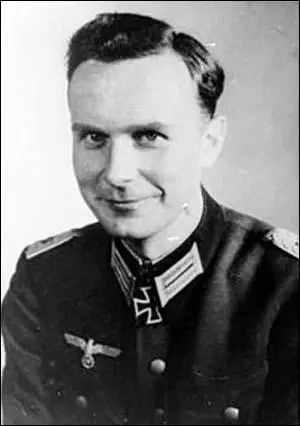
From that time on, Bussche, a committed Christian, dedicated himself to the task of doing whatever he could do destroy Hitler and all that he represented. There were, he said, only three possible ways for an honorable officer to react: to die in battle, to desert, or to rebel." (5) A lung injury resulted in him being invalided him out of active service. On his return to Germany he was put into contact with Friedrich-Werner Graf von der Schulenburg, a diplomat sympathetic to the resistance, who arranged for him to meet Stauffenberg. (6) When Stauffenberg asked him if he would be willing to kill Hitler, Bussche accepted without hesitation. After a brief discussion about the preferred method, they concluded that a bomb was the means most likely to succeed. A pistol shot might miss the mark or produce only a superficial wound. It was also believed that Hitler wore a bulletproof waistcoat. (7)
The occasion for the planned attack was a demonstration of new equipment and winter uniforms developed for use on the eastern front. Bussche agreed to be a model for one of the uniforms at a rally on 16th November, 1943, at the Wolfschanze at Rastenburg, where Hitler would be in attendance. He was a perfect choice for such a role. He looked "Nordic" and had served over the entire length of the eastern front. It was decided that Bussche should use a bomb with a five-second fuse. He planned to conceal the bomb in a deep pocket of the new uniform, and in the course of explaining its features, arm the bomb, and then jump on Hitler and throw him to the ground, holding him there for the few seconds required for the bomb to explode. Unfortunately, the rally was cancelled because the train in which the new uniforms were being transported was hit and destroyed by an Allied bomb the night before the proposed fashion show. (8)
Bussche was recalled to active service on the eastern front, but before he left Berlin he promised that he would be willing to carry out the assassination when the demonstration of new equipment and winter uniforms was re-scheduled. In January 1944, Stauffenberg contacted Bussche requesting his return. However, his divisional commander, who was not in the conspiracy, raised doubts about his battalion commanders acting as models for demonstrations of uniforms. A few days later Bussche was severely wounded and lost a leg and was unable to take part in the killing of Hitler. (9)
The Major General Helmuth Stieff was the only conspirator who was able to attend the demonstration of new uniforms. Stieff had recently declared himself ready to assassinate Hitler, but, when Stauffenberg asked him to carry out the killing, he backed out. Stauffenberg now approached Lieutenant Ewald Heinrich von Kleist and asked him to carry out the task. He asked for his father's opinion, who replied: "You have to do it. Anyone who falters at such a moment will never again be one with himself in this life." However, he decided against taking such action. (10)
1944 July Plot
Claus von Stauffenberg now decided to carry out the assassination himself. But before he took action he wanted to make sure he agreed with the type of government that would come into being. Conservatives such as Carl Goerdeler and Johannes Popitz wanted Field Marshal Erwin von Witzleben to become the new Chancellor. However, socialists in the group, such as Julius Leber and Wilhelm Leuschner, argued this would therefore become a military dictatorship. At a meeting on 15th May 1944, they had a strong disagreement over the future of a post-Hitler Germany. (11)
Stauffenberg was highly critical of the conservatives led by Carl Goerdeler and was much closer to the socialist wing of the conspiracy around Julius Leber. Goerdeler later recalled: "Stauffenberg revealed himself as a cranky, obstinate fellow who wanted to play politics. I had many a row with him, but greatly esteemed him. He wanted to steer a dubious political course with the left-wing Socialists and the Communists, and gave me a bad time with his overwhelming egotism." (12)
Peter Hoffmann has argued: "On Goerdeler's insistence he agreed that Goerdeler should be the main negotiator with Leber, Leuschner and their representatives. Goerdeler had already written a letter to Stauffenberg, transmitted through Kaiser, protesting against Stauffenberg negotiating independently with trade union leaders and socialists... This meant that Goerdeler should play the leading role in all non-military questions, as Beck was still insisting as late as July 1944. This he did not so much from suspicion of Stauffenberg as from aversion to exaggerated concentration of power. Moreover Stauffenberg was politically inexperienced; his views were vague; goodwill and idealism by themselves generally only do damage in politics. The fact that he was risking his life did not give Stauffenberg the right to claim power of political decision; Goerdeler and Beck were risking their lives too. The ability to murder Hitler was no adequate justification for assuming the role of political leader." (13)
To carry out the assassination, it was necessary for Stauffenberg to have access to Adolf Hitler. One member of the group, General Friedrich Fromm was Commander in Chief of the Reserve Army. His was in charge of training and personnel replacement for combat divisions of the German Army and had regular meetings with Hitler. It was agreed that a close friend of General Rudolf Schmundt, Hitler's chief adjutant, should suggest that Stauffenberg should become chief of staff to General Fromm. According to Albert Speer, "Schmundt explained to me, Stauffenberg was considered one of the most dynamic and competent officers in the German army. Hitler himself would occasionally urge me to work closely and confidentially with Stauffenberg. In spite of his war injuries (he had lost an eye, his right hand, and two fingers of his left hand), Stauffenberg had preserved a youthful charm; he was curiously poetic and at the same time precise, thus showing the marks of the two major and seemingly incompatible educational influences upon him: the circle around the poet Stefan George and the General Staff. He and I would have hit it off even without Schmundt's recommendation." (14)
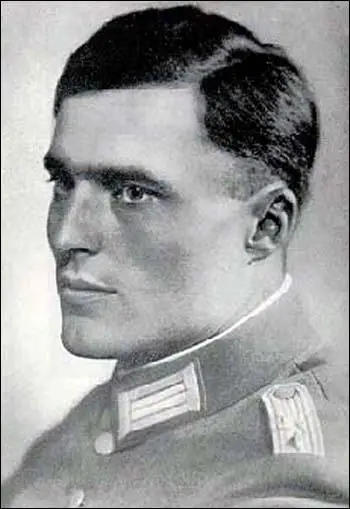
On 1st July 1944 Stauffenberg was promoted to Colonel and became Chief of Staff to Fromm. Stauffenberg was now in a position where he would have regular meetings with Adolf Hitler. Fellow conspirator, Henning von Tresckow sent a message to Stauffenberg: "The assassination must be attempted, at any cost. Even should that fail, the attempt to seize power in the capital must be undertaken. We must prove to the world and to future generations that the men of the German Resistance movement dared to take the decisive step and to hazard their lives upon it. Compared with this, nothing else matters." (15)
Stauffenberg attended his first meeting with Hitler on 6th July. He had a bomb with him but for reasons that to this day are not entirely clear, he did not try to kill Hitler. The generally accepted theory is that Stauffenberg was dissuaded from acting because neither Heinrich Himmler or Hermann Göring were present. Several conspirators, including General Ludwig Beck, wanted these two men killed at the same time as Hitler. The theory being that Göring and Himmler would take power after the death of Hitler. (16)
On 11th July, Stauffenberg flew once more to Hitler's headquarters in Berchtesgaden. He had a bomb with him but did not set it off because Himmler and Göring were not at the meeting. According to Peter Hoffmann: "There was never any certainty that Himmler or Göring would be present at the briefing conferences; neither of them attended regularly. They were usually represented by their liaison officers who reported to them; they themselves came comparatively seldom. Sometimes Himmler and Göring had no personal contact with Hitler for weeks; at other times one of the other would attend several conferences with Hitler daily." (17) Stauffenberg remained committed to trying to kill Hitler although he had little confidence he would be successful. On 14th July he was quoted as saying: "The worst thing is knowing that we cannot succeed and yet that we have to do it, for our country and our children." (18)
Claus von Stauffenberg had another meeting with Adolf Hitler on 15th July. Although he had the bomb with him he did not take this opportunity to kill Hitler. The main reason was probably the difficulty he would have had in fusing his bomb. Since he only had three fingers on one hand he had to use a pair of pliers and this would certainly have been seen. It has been claimed that if he had bent down "to his briefcase and began to open it with his three fingers - someone would certainly have come to his assistance, lifted it on to the table and helped him take out the papers - impossible then to search round for the pliers, squeeze the fuse and put the briefcase back on the floor." (19)
Stauffenberg needed help in his task and his adjutant, Werner von Haeften, agreed to help assassinate Hitler, when he told his brother, the diplomat, Hans-Bernd von Haeften, also a member of the conspiracy, he raised objections on religious grounds. For sometime he had become entangled in a web of philosophical and religious reflection. He asked Werner: "Are you absolutely sure this is your duty before God and our forefathers?" Werner replied that the act was justified because it would bring an end to the war and would therefore save the lives of many Germans. (20)
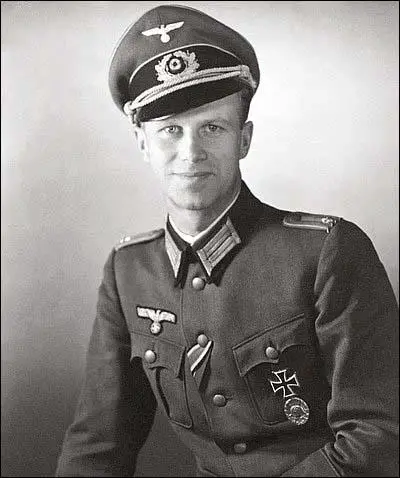
Claus von Stauffenberg was now convinced that he was morally justified in taking this action. His religious and ethical beliefs led him to the conclusion that it was his duty to eliminate Hitler and his murderous regime by any means possible. Just before he left on his mission to kill Hitler he said: "It is now time that something was done. But he who has the courage to do something must do so in the knowledge that he will go down in German history as a traitor. If he does not do it, however, he will be a traitor to his conscience." (21)
Other members of the conspiracy also urged action. Colonel-General Ludwig Beck, who had been an integral part of the resistance from the beginning, continued to argue that the attempt must be made, regardless of the consequences. As Theodore S. Hamerow pointed out: "Some of those involved in planning the coup started to suggest that the attempt to overthrow the Nazi regime must be made not primarily to save Germany but as an act of atonement or expiation. Even if it should fail, even if the fatherland should be conquered and occupied, the resistance must wage its struggle against National Socialism as a moral obligation, as a sacrifice for mankind, as an appeal for forgiveness and redemption... What mattered was proving to the world that at least some Germans, acting out of conscience and in accordance with universal moral values, were willing to sacrifice themselves to protect humanity against an unspeakable evil." (22)
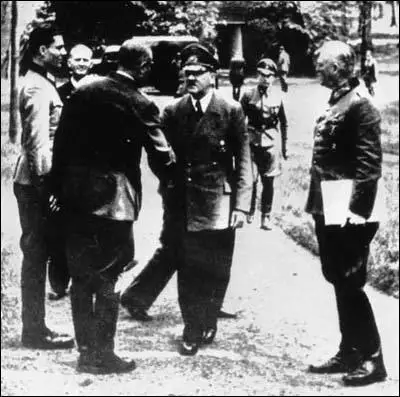
to attention next to Fromm. Field Marshal Wilhelm Keitel, with folder, looks on.
On 20th July, 1944, Stauffenberg and Haeften left Berlin to meet with Hitler at the Wolf' Lair. After a two-hour flight from Berlin, they landed at Rastenburg at 10.15. Stauffenberg had a briefing with Field Marshal Wilhelm Keitel, Chief of Armed Forces High Commandat, at 11.30, with the meeting with Hitler due to take place at 12.30. As soon as the meeting was over, Stauffenberg, met up with Haeften, who was carrying the two bombs in his briefcase. They then went into the toilet to set the time-fuses in the bombs. They only had time to prepare one bomb when they were interrupted by a junior officer who told them that the meeting with Hitler was about to start. Stauffenberg then made the fatal decision to place one of the bombs in his briefcase. "Had the second device, even without the charge being set, been placed in Stauffenberg's bag alone with the first, it would have been detonated by the explosion, more than doubling the effect. Almost certainly, in such an event, no one would have survived." (23)
When he entered the wooden briefing hut, twenty-four senior officers were in assembled around a huge map table on two heavy oak supports. Stauffenberg had to elbow his way forward a little in order to get near enough to the table and he had to place the briefcase so that it was in no one's way. Despite all his efforts, however, he could only get to the right-hand corner of the table. After a few minutes, Stauffenberg excused himself, saying that he had to take a telephone call from Berlin. There was continual coming and going during the briefing conferences and this did not raise any suspicions. (24)
Stauffenberg and Haeften went straight to a building about 200 hundred yards away consisting of bunkers and reinforced huts. Shortly afterwards, according to eyewitnesses: "A deafening crack shattered the midday quiet, and a bluish-yellow flame rocketed skyward... and a dark plume of smoke rose and hung in the air over the wreckage of the briefing barracks. Shards of glass, wood, and fiberboard swirled about, and scorched pieces of paper and insulation rained down." (25)
Stauffenberg and Haeften observed a body covered with Hitler's cloak being carried out of the briefing hut on a stretcher and assumed he had been killed. They got into a car but luckily the alarm had not yet been given when they reached Guard Post 1. The Lieutenant in charge, who had heard the blast, stopped the car and asked to see their papers. Stauffenberg who was given immediate respect with his mutilations suffered on the front-line and his aristocratic commanding exterior; said he must go to the airfield at once. After a short pause the Lieutenant let them go. (26)
According to eyewitness testimony and a subsequent investigation by the Gestapo, Stauffenberg's briefcase containing the bomb had been moved farther under the conference table in the last seconds before the explosion in order to provide additional room for the participants around the table. Consequently, the table acted as a partial shield, protecting Hitler from the full force of the blast, sparing him from serious injury of death. The stenographer Heinz Berger, died that afternoon, and three others, General Rudolf Schmundt, General Günther Korten, and Colonel Heinz Brandt did not recover from their wounds. Hitler's right arm was badly injured but he survived. (27)
The original plan was for Ludwig Beck, Erwin von Witzleben and Erich Fromm to take control of the German Army. However, General Erich Fellgiebel, sent a message to General Friedrich Olbricht to say that Hitler had survived the blast. The most calamitous flaw in Operation Valkyrie was the failure to consider the possibility that Hitler might survive the bomb attack. Olbricht told Hans Gisevius, they decided it was best to wait and to do nothing, to behave "routinely" and to follow their everyday habits. (28) Quirnheim long closely involved in the plot, had already begun the action with a cabled message to regional military commanders, beginning with the words: "The Führer, Adolf Hitler, is dead." (29)
Stauffenberg arrived back in Berlin and went straight to see General Friedrich Fromm. Stauffenberg insisted that Hitler was dead. Fromm replied that he had just learnt from Field Marshal Wilhelm Keitel that Hitler had survived the bomb attack. Stauffenberg replied, "Field Marshal Keitel is lying as usual. I myself saw Hitler being carried out dead." He then admitted that he had planted the bomb himself. Fromm became very angry and declared that all the conspirators were under arrest, whereupon Stauffenberg retorted that, on the contrary, they were in control and he was under arrest. (30)
Shortly after the assassination attempt, Joseph Goebbels broadcast a communiqué over German radio, assuring the public that Hitler was alive and well and that he would speak to the nation later that evening. Goebbels began the broadcast with the following words: Today an attempt was made on the Führer's life with explosives... The Führer himself suffered no injuries beyond light burns and bruises. He resumed his work immediately." (31)
Albert Speer, minister of armaments, visited Goebbels soon after the broadcast. He described the scene outside: "The office windows looked out on the street. A few minutes after my arrival I saw fully equipped soldiers, in steel helmets, hand grenades at their belts and submachine guns in their hands, moving toward the Blandenburg Gate in small, battle ready groups. They set up machine guns at the gate and stopped all traffic. Meanwhile, two heavily armed men went up to the door along the park and stood guard there." However, Goebbels was not confident that he would not be arrested and carried with him some potassium cyanide capsules. (32)
Goebbels was safe because the July 1944 Plot had been so badly organized. No real attempt had been made to arrest the Nazi leaders or to kill them. Nor did they secure immediate control of the radio and telephone communications systems. This was surprising as weeks earlier the original plan included the seizure of the long-distance telephone office, the main telegraph office, the radio broadcasting facilities in and around Berlin, and the central post office. "Incomprehensibly, the conspirators did not carry out these actions with sufficient dispatch, and this produced utter and fatal confusion." (33)
Later that day, Goebbels told Heinrich Himmler: "If they hadn't been so clumsy! They had an enormous chance. What dolts! What childishness? When I think how I would have handled such a thing. Why didn't they occupy the radio station and spread the wildest lies? Here they put guards in front of my door. But they let me go right ahead and telephone the Führer, mobilize everything! They didn't even silence my telephone. To hold so many trumps and botch it - what beginners!" (34)
Sometime between 8:00 and 9:00 p.m., on 21st July, 1944, the cordon that the conspirators had established around the government quarter was lifted. Military units that initially had supported the conspirators were switching loyalties back to the Nazis. The main reason for this was the series of radio announcements that were broadcast throughout Germany. By 10.00 p.m., forces loyal to the government were able to seize control of central headquarters and General Friedrich Fromm was released and Claus von Stauffenberg and his followers were taken prisoner. (35)
Those arrested included Quirnheim, Colonel-General Ludwig Beck, Colonel-General Erich Hoepner, General Friedrich Olbricht, and Lieutenant Werner von Haeften. Fromm decided that he would hold an immediate court-martial. Stauffenberg spoke out, claiming in a few clipped sentences sole responsibility for everything and stating that the others had acted purely as soldiers and his subordinates. (36)
All the conspirators were found guilty and sentenced to death. Hoepner, an old friend, was spared to stand further trial. Beck requested the right to commit suicide. According to the testimony of Hoepner, Beck was given back his own pistol and he shot himself in the temple, but only managed to give himself a slight head wound. "In a state of extreme stress, Beck asked for another gun, and an attendant staff officer offered him a Mauser. But the second shot also failed to kill him, and a sergeant then gave Beck the coup de grâce. He was given Beck's leather overcoat as a reward." (37)
The condemned men were taken to the courtyard. Drivers of vehicles parked in the courtyard were instructed to position them so that their headlight would illuminate the scene. General Olbricht was shot first and then it was Stauffenberg's turn. He shouted "Long live holy Germany." The salvo rang out but Haeften had thrown himself in front of Stauffenberg and was shot first. Only the next salvo killed Stauffenberg and was shot first. Only the next salvo killed Stauffenberg. Quirnheim was the last man shot. It was 12.30 a.m. (38)
Primary Sources
(1) Ian Kershaw, Luck of the Devil: The Story of Operation Valkyrie (2009)
Fromm refused outright Oldbricht's request that he should sign the orders for "Valkyrie". But by the time Olbright had returned to his room to announce Fromm's refusal, his impatient chief of staff Colonel Mertz von Quirnheim, a friend of Stauffenberg, and long closely involved in the plot, had already begun the action with a cabled message to regional military commanders, beginning with the words: "The Führer, Adolf Hitler, is dead." When Fromm tried to have Mertz arrested, Stauffenberg informed him that, on the contrary, it was he, Fromm, who was under arrest.
(2) Joachim Fest, Plotting Hitler's Death (1997)
Stauffenberg spoke out, claiming in a few clipped sentences sole responsibility for everything and stating that the others had acted purely as soldiers and his subordinates. Fromm said nothing in reply, merely standing aside so that the prisoners could be taken out... In the courtyard outside, several military vehicles pulled up, their headlights glaring. Along all the sides of the square, groups of curious onlookers gathered. In the middle stood an execution squad consisting of Lieutenant Werner Schady and ten noncommissioned officers. As the prisoners emerged from the staircase, they were positioned in front of a small pile of sand. Olbricht was the first to be shot. Next it was Stauffenberg's turn, but just as the squad fired, Haeften, in a defiant gesture, threw himself into the hail of bullets. When the squad again took aim at Stauffenberg, he shouted, "Long live sacred Germany." Before the sound of his voice died away, shots resounded. The last to die was Mertz.
